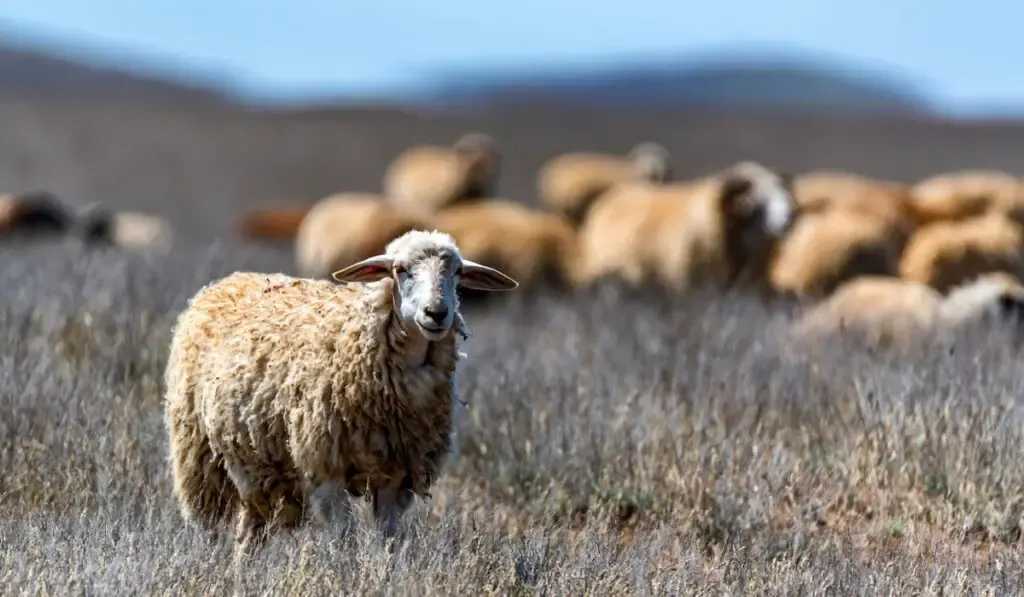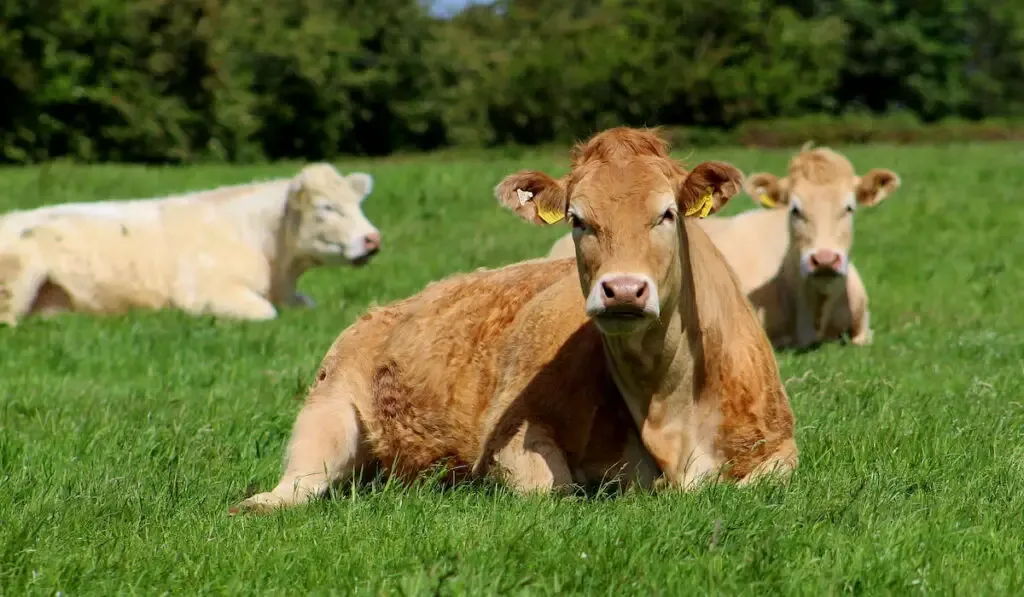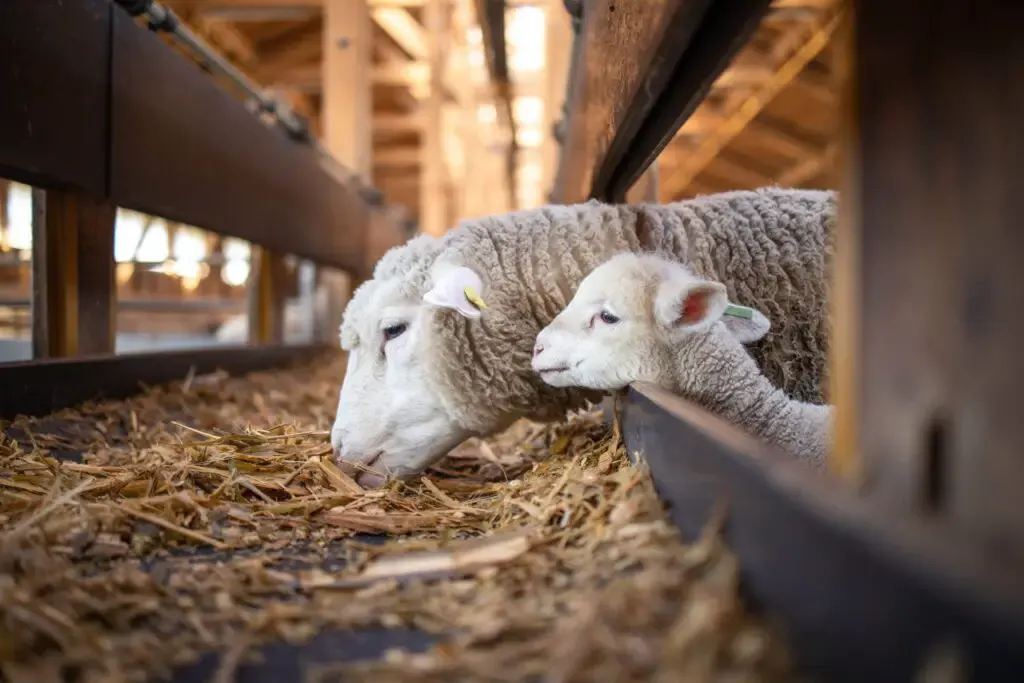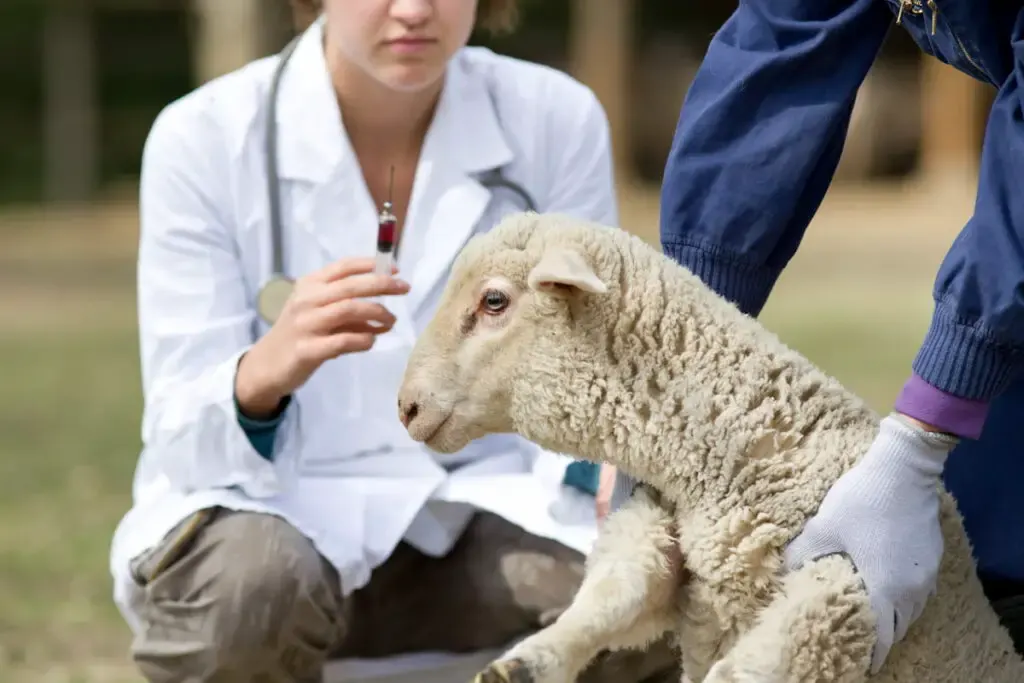So, you are interested in raising livestock. You made the decision that sheep would be a perfect choice. But then, you scoured the internet and became overloaded with too much information that made your dream of raising your own sheep seem like a far-fetched idea.
If you’ve come this far, then you have come to the right place. Your journey to raising your own sheep has just started. In fact, you will realize many benefits when you raise these cute fluffy ruminants, be it as pets or for your homestead.
Let’s begin and take a deep, complete look at how to raise your own sheep.

The Purpose of Raising Sheep
Like other activities, the first thing you should have is an objective: why do you want to raise sheep?
Is it for leisure? Business? Knowing what you want firsthand will save time and resources as you wade through the information and setup process.
Although sheep are multi-purpose animals, you don’t want to end up raising dairy sheep when your main objective is to get their meat or wool. Plus, if you are new in this industry, there are certain breeds that you should avoid because they can be hard to deal with.
Sheep-raising can be a rewarding activity once you have set your goals. They serve a few purposes including:
1. Wool production
Throughout centuries, fleeces from sheep have been mass-produced into different high-quality wool products. Some of the high-grade fleeces can be sold up to $20 per pound. The sale of wool is still increasing with rising demand for fine wool from different sheep breeds.
2. Meat production
Some sheep are bred and raised for their dual-purpose traits— wool and meat.
For instance, slaughter lambs and feeder lambs are the most common lambs being sold and processed for their meat. The price of their meat is dependent on the lamb’s weight and demand from the market.
3. Dairy production
The dairy sheep industries are not as diverse as the wool and meat markets. Still, there is a demand for this kind of sheep.
Sheep’s milk is usually processed into dairy products such as yogurt, ice cream, gourmet cheese, and other cheese-based products. Unlike goats, sheep’s milk is rarely made for direct consumption and regular drinking.
4. Grazing activities
Aside from goats, sheep are also being used by farmers to maintain their farms. These animals will graze the field grasses and simultaneously eat any scrub and many nuisance plants.
Some people make a living by letting their sheep roam freely to graze on other people’s land and charge them based on the acreage maintained. This is also due to the fact that sheep are small, docile, and easier to manage compared to other animals.
5. Breeding stock
Many selected ewes and rams are sold as breeding stock. Generally, these sheep will be under careful and thorough examination of their physical traits, wool quality, health, and various parameters to ensure that buyers will get the best bang for their buck.
Commercial breed stock producers will also keep detailed bookkeeping of their livestock, be it for the purebreds or crossbreds.

Choose your desired varieties
Once you figure out what you want out of these animals, then it is time to move to the next important step, selecting the sheep breed(s).
There are thousands of sheep breeds all around the world. In the United States alone, there are more than 50 different breeds available.
Knowing these facts might seem like a heavy thing to comprehend but as long as you are clear with your goals, it all follows the same basic rules.
Here are the three most common categories of sheep based on what they can be raised and bred for:
1. Wool Sheep
Wool sheep have been favored by most people because they are easy to raise and can be kept for quite a long time until they can no longer produce any wool or young of their lineage. In fact, wool sheep are more popular than hair sheep. Basically, these sheep will be categorized by the type of coats or wool they have.
Regular shearing is needed for wool sheep to keep their fleeces healthy and clean. Wool sheep are divided based on the type of fleece they produce. For instance:
- Fine wool sheep
Fine wool sheep are the most common variety available all around the world.
They generally produce wool with the smallest fiber diameter that measures less than 22 microns.
This type of wool can be used to make high-quality wool clothing and other fine-woolen products.
Fine wool sheep are also hardy breeds. They have a long lifespan and can be well-adapted to warmer climates. Some of the popular fine wool sheep are the Debouillets, Panamas, Rambouillet, and American Cormo.
- Long wool sheep
Long wool sheep generally grow coarse wool fibers that measure more than 30 microns. Due to the low composition of lanolin in their fleeces, they tend to produce better and cleaner wool. Long wool sheep can be found mostly in cool climate regions like New Zealand and the United Kingdom.
For instance, Valais Blacknose sheep, Leicester Longwool sheep, Perendale sheep, and Lincoln sheep are some of the common longwool breeds.
- Carpet wool sheep
Carpet wool sheep are slightly different than the rest. They generally produce the coarsest wool that can be used to make carpets.
This type of sheep possesses double-coated wool with short fine undercoats and longer outer coats. They also yield fleeces with spots and a variety of colors. For instance, Jacob sheep have spotted fleeces while the Shetlands have fleeces with different colors.
2. Meat Sheep
Meat sheep make up around 15 percent of the world’s sheep population and they generally produce medium wool fibers. Some breeds in this category are also registered as hair sheep and dual-purpose breeds.
During their first year, the meat from this class is called lamb, while hogget refers to the meat in their second year.
The older sheep meat is known as mutton.
Some of the well-known meat sheep are the Dorsets, Hampshire, Hog Islands, Oxfords, Suffolks, and Southdowns.
3. Dairy Sheep
Sheep milk, or ewes milk, is highly nutritious and can be produced commercially into different dairy products such as cheese, yogurt, and other cheese-based products.
In fact, sheep milk contains a high amount of conjugated linoleic acid (CLA) compared to other livestock.
CLA is beneficial to human bodies as a healthy fat and cancer-fighting agent. Although dairy sheep produce less milk than goats, their milk is generally sold at a higher price.
Some of the common dairy sheep are the Awassis, East Friesians, British Milksheep, and Lacaunes.

Cost of Raising and Purchasing Sheep
Sheep can be categorized into purebred, crossbred, and registered breeds. Depending on your capital, there is no right or wrong decision. Purebreds are sold at a higher price in the market due to the purity level of their genes.
But once you can successfully breed more of these sheep from their parents, your investment could double in just a short period of time.
On the other hand, you can opt for a crossbreed to save costs because they tend to be hardier than purebreds. There are also landrace sheep that are much hardier and are able to adapt to local climates.
Raising small flocks can be quite costly, in terms of the future profit of your investment but they are easy to handle.
On the flip side, when you raise large flocks, your costs will double just to maintain and feed a large number of sheep but your return can double as well.
Finally, you also have to factor in the environment of your place. Not all breeds can adapt to different climate changes. So, pick your preferred breeds wisely.

Taking Care Of Your Sheep
Unlike other large-sized animals, sheep are much easier to handle. A suitable environment will ensure that your sheep can live comfortably without causing too much burden on their physical and mental health.
Here are some basic rules and necessities that you should provide for your sheep:
1. Land
You don’t need to have a hundred acres of land. As long as there is enough space for your sheep to grow, run, and graze freely, then that is more than enough. Even a small flock of sheep can be raised on a small farm.
But be sure to account for the size of the flock to avoid overcrowding issues. As a general rule of thumb, you should allow at least an acre for 5 ewes. As the flock gets larger, you can improve by evaluating your land resources, pasture management, and forage culture.
2. Housing
Like other livestock, sheep require basic shelter or housing that they can shelter in. For instance, a traditional wooden barn with straw bedding can be built as the most basic shelter for these animals. Other expensive housing like metal or pole buildings provide better structure and are able to withstand harsh climates.
If you are looking to keep your sheep in a confined building, then the pen should have at least 12 to 16 square feet of space per ewe. If the ewe has her lambs, then the space must be larger, which is around 16 to 20 square feet.
Meanwhile, feeder lambs require around 8 to 10 square feet and lambing pens should have a space of 16 to 25 square feet.
When it comes to bedding, you can use different materials based on your costs and resources.
These include hay, straw, peanut hulls, wood chips, leaves, dried corn stalks, and many more.
Avoid using sawdust because it coats and becomes trapped inside their fleeces. Always use materials that are clean and easy to replace.
Finally, a sustainable shelter should have proper ventilation. A shelter with poor ventilation can trap or lose too much heat and cause respiratory problems like bronchitis and pneumonia that could affect your sheep. One way to detect shelters with bad ventilation is the lingering smell of ammonia.
Sheep housing doesn’t have to be brand new. In fact, you can be thrifty and opt for a used building like a poultry barn, as long as it is clean, comfortable, and is able to accommodate your sheep.
3. Fencing
The two most basic fencings that you need for your sheep are perimeter and interior fences. Although setting up fences can be quite costly, they are essential to protect and guard your livestock. You can look at perimeter fences as the first line of defense where they will be set up around the boundary of your land or property.
One of the common perimeter fences that people use is high-tensile electric fences. This type of fence is made from smooth wires, easy to set up, and much cheaper than other fences.
Interior fences are built to create small paddocks for grazing activity. Although their purpose is mainly not to prevent any attack from predators, they are still important to separate the rams from ewes or sick sheep from the healthy ones.
Unlike perimeter fences that need to be built from a strong material, interior fences can be set up from permanent or temporary fencing materials.
On the other hand, you also can construct fences from other materials like mesh wire, barbed wire, or woven wire. Mesh wire fences can be divided into types of wire based on the shape of their openings: the square knot mesh and the diamond mesh.
Barbed wire fences are the less effective fences because they don’t really help in deterring predators and can also hurt your sheep, especially if their wool becomes entangled with the barbs.
The best option would be woven wire fences. Be it electrical or non-electrical, the best height for woven wire fences should be around four to five feet high.

4. Diet and feeding habits
Generally, sheep will graze on plants in the area they live. However, some of these plants or grasses might contain eggs from slugs or snails that carry parasites. If you are meticulous and care about their diet, there are other types of foods that you can feed them.
For instance, you can feed your sheep with high-quality pastures in the summer and grass hay in the winter. Be sure to provide them with fresh hay because these foods can become moldy during colder seasons. Moldy hay is toxic and certainly can harm them.
If you choose to raise wool sheep, avoid feeding them a mix of hay and alfalfa. This is to avoid their fleeces from trapping any alfalfa crumbs, thus reducing the quality of their wool.
Finally, a steady supply of fresh water is a must. Keep a fixed schedule, preferably daily, to change their water. If possible, avoid using well water due to the high level of sulfur and iron in it. Sulfur and iron are some of the copper antagonists that could cause a copper deficiency in sheep.
You can also provide them with salt blocks that help in regulating the composition of minerals in their bodies.
5. Grooming
Like other animals, sheep also need regular grooming to keep them healthy.
For instance, hoof trimming is one of the important aspects of sheep care. Without proper and regular trimming, they could suffer from hooves and foot diseases live overgrown hooves, footrots with maggots, foot scald, foot abscess, foot and mouth diseases (FMD), and laminitis.
For wool sheep, regular combing and shearing of their fleeces are highly recommended. Most wool sheep have to be sheared at least once a year. Depending on how heavy the fiber that they produce, you may have to shear them twice.
Shearing a small flock is fairly easy. But if you have a large flock, then it is better for you to hire a team of professional sheep shearers to make the process easier.
Some breeds don’t need shearing because they can naturally shed their coats. However, some thick or double-coated breeds need to be maintained and taken care of.
Shearing is not an easy skill to learn. Until you are confident with your ability to shear your own flock, then hire a professional shearer and learn how to properly do it along the way.

Health Issues To Be Aware Of
Overcrowding issues or a drastic increase in flock numbers can lead to parasite infestations. The most common parasites in sheep are internal parasites or worms. There are some reasons why sheep are more susceptible to internal parasites. For instance:
- Sheep produce small feces containing worm eggs that destroy quickly when they fall onto the pasture, hence releasing the worm larvae.
- They eat or graze too close to the pasture, soil surface, and their fecal matters. Close contact with any of these things can greatly increase their chance of getting parasites.
- Sheep immunity is pretty weak compared to other ruminants. In fact, most lambs take around 10 months up to a year to develop immunity to parasites. Some of the FDA-approved anti-parasitic drugs that are used in the United States are called anthelmintics. Other than that, the breeders carry the responsibility to create their own system in controlling parasites in their livestock.
Some of the worms that you can found in sheep are tapeworms, roundworms, liver flukes, lungworms, and meningeal worms. All of these parasites can be contained with a proper and clear-cut plan.
For instance, feeders should be kept clean and the water should be changed frequently to prevent any contamination. By using clean and fresh pastures that are free from worm larvae, you can also reduce the chance of parasite infestation in your flock.
Regular worming should also be done to prevent the spread of these parasites. You can do a weekly check-up on the sheep and look for any signs of parasites in their system. When symptoms emerge, then it is advisable for you to seek out professional help.
Final Thoughts
Raising sheep surely takes a lot of work, time, and resources. Oftentimes, beginners will encounter challenges more than experienced breeders. But with these guidelines, trouble can be avoided or prepared for.
Once you are fully informed of the do’s and don’ts, having your own flock of sheep can become a rewarding experience, both emotionally and financially.
Citations
- https://blog.gunassociation.org/a-beginners-guide-to-raising-sheep/
- https://morningchores.com/raising-sheep/
- https://thriftyhomesteader.com/a-beginners-guide-to-sheep/
- https://www.timbercreekfarmer.com/raising-sheep-without-grazing-pastures/
- http://www.sheep101.info/201/
- https://www.treehugger.com/how-to-raise-sheep-3016859
- https://www.agriculture.com/family/living-the-country-life/thinking-of-raising-sheep

